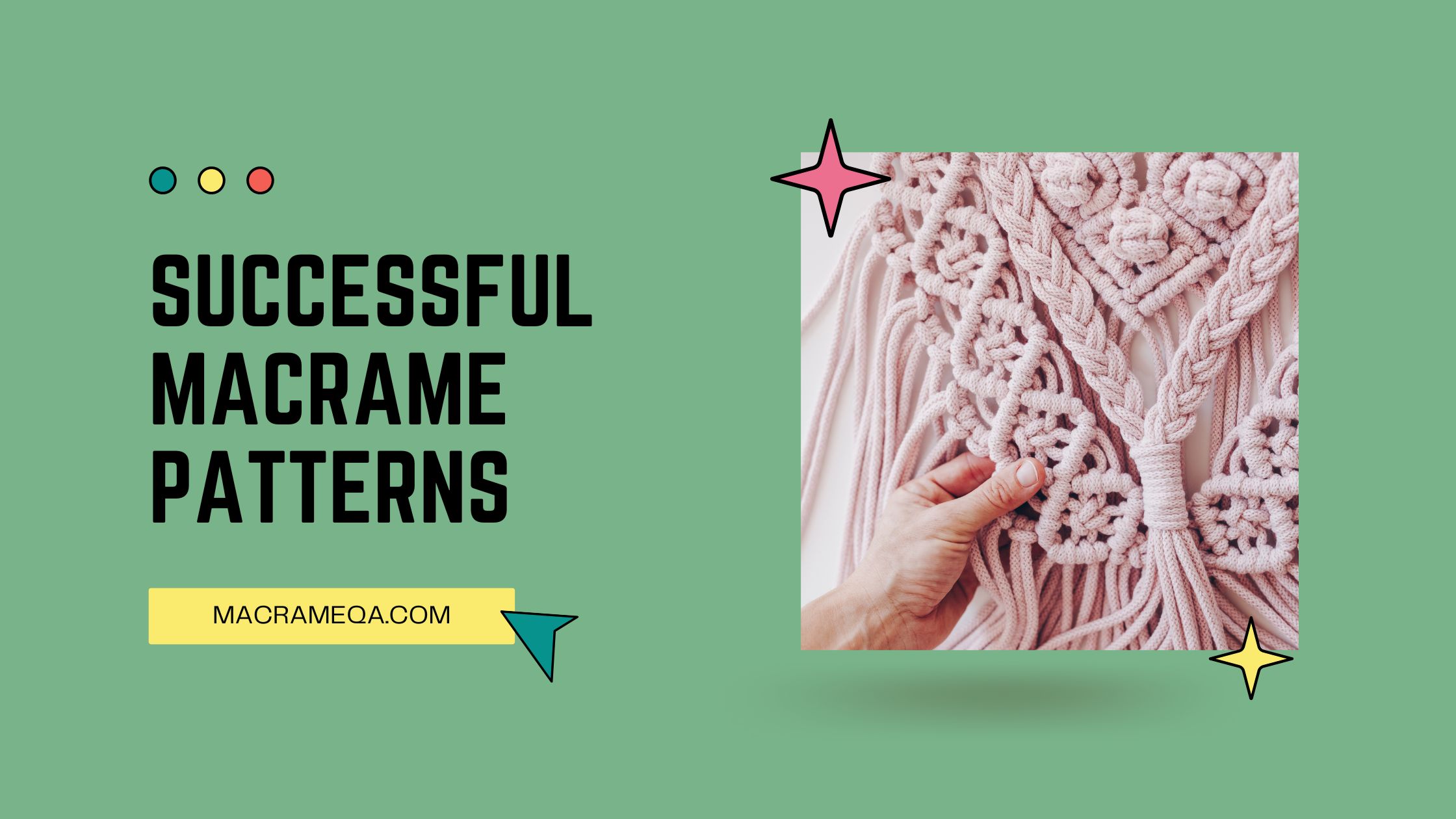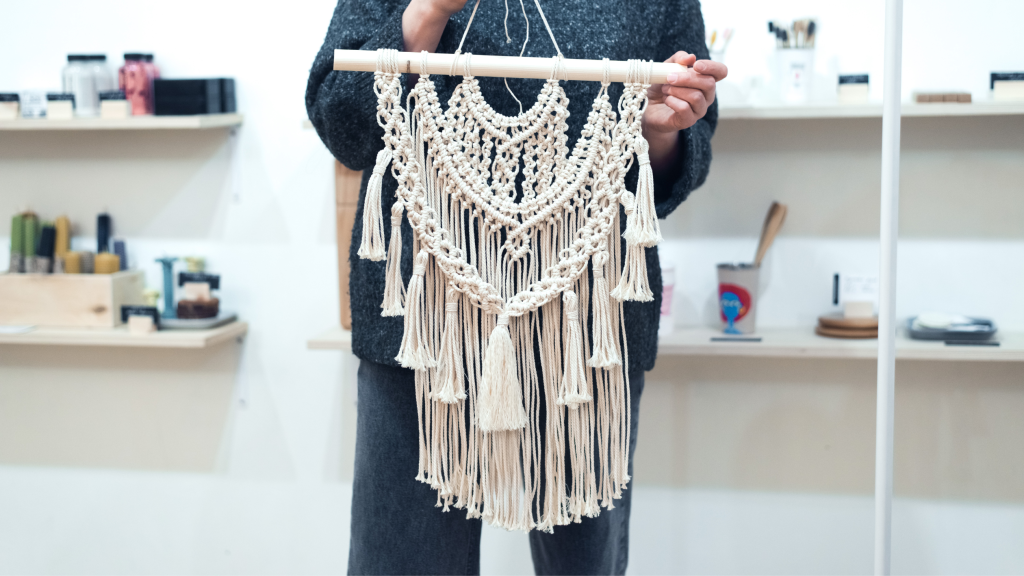Macrame patterns have become increasingly popular in recent years, as they offer a unique and stylish way to add a touch of creativity to your home decor. But what makes a macrame pattern truly successful? From the choice of materials to the complexity of the design, there are key elements that contribute to the overall appeal and effectiveness of a macrame creation. \
Whether you’re a beginner or a seasoned macrame artist, understanding these elements will help you create stunning and eye-catching patterns that will impress your friends and add a cozy vibe to any space. Let’s explore the key elements of successful macrame patterns and unlock the secrets to mastering this captivating art form.
Key Elements Of Successful Macrame Patterns
When it comes to creating stunning macrame patterns, there are several key elements to consider. These elements include design, materials, knots, color, proportion, pattern placement, techniques, balance, creativity, and attention to detail. By carefully considering and incorporating these elements into your macrame projects, you can create visually appealing and successful pieces that showcase your creativity and craftsmanship. Let’s explore each of these elements in more detail to understand how they contribute to the beauty and effectiveness of macrame patterns.
Design
Choosing the right design is crucial when creating successful macrame patterns. You want to select a design that reflects your personal style and preferences while also considering the intended purpose of the project. Whether you’re creating a wall hanging, plant hanger, or a decorative piece, the design should be aesthetically pleasing and visually engaging. Consider the size and shape of the project to ensure it fits well in the intended space and creates a harmonious composition.
Creating balanced compositions is also important in macrame design. By strategically arranging different elements within the pattern, such as knots and decorative elements, you can achieve a visually balanced composition that is pleasing to the eye. Incorporating elements of symmetry can also add a sense of harmony and balance to your macrame patterns. Experimenting with different textures, whether it’s using different types of fibers or incorporating unique decorative elements, can add depth and visual interest to your designs. Don’t be afraid to get creative and try new combinations to find what works best for your projects.
Materials
The materials used in macrame patterns play a significant role in the overall look and durability of the finished piece. When selecting cords, it’s important to choose appropriate ones that are suitable for the intended purpose of your project. Consider factors such as the weight and strength of the cords, as well as their flexibility and texture. Quality and durability should also be taken into account to ensure that your macrame patterns can withstand the test of time.
Exploring various types of fibers, such as cotton, jute, or nylon, can provide different textures and visual effects to your patterns. Additionally, using cords of different thicknesses and colors can create interesting contrasts and variations within your macrame designs. Adding decorative elements, such as beads or feathers, can also enhance the overall look and add a personal touch to your projects.
Knots
Knots are an essential component of successful macrame patterns, and learning different knots is key to creating beautiful designs. Start with the basics and gradually expand your skillset by learning more complex knots. Combining multiple knots can add intricacy and visual appeal to your patterns. Consider using knots to create texture within your macrame designs, as they can add depth and dimension to your projects. Mastering techniques for clean and tight knots is important to ensure the durability of your macrame pieces. Additionally, creating unique knot combinations can help you develop your own signature style and make your patterns stand out.
Color
Color plays a significant role in macrame patterns as it can evoke different emotions and create a desired atmosphere. Understanding the psychology of color can help you choose the right colors for your projects. Selecting a color palette that complements your design and reflects the intended mood or theme is crucial.
Consider choosing contrasting or complementary colors to create visual interest and make certain elements stand out. Using color strategically can draw attention to specific areas and create a focal point within your macrame patterns. Don’t be afraid to experiment with different color combinations and explore the effects they have on your designs.
Proportion
Maintaining balanced proportions in your macrame patterns is essential to creating visually appealing designs. Understanding the concept of the golden ratio can help you achieve harmonious proportions within your projects. Use size variations to create visual interest and balance within your patterns. Consider the space where the macrame will be displayed to ensure that the proportions are appropriate and complement the surrounding environment. By carefully considering proportion, you can create a sense of harmony and balance in your macrame designs.
Pattern Placement
When planning a macrame pattern, it’s important to consider the placement of patterns within the design. Think about the overall flow of the composition and how patterns can create visual movement and intrigue. It’s crucial to ensure that patterns fit well with the size and shape of the project. Aligning patterns correctly is also important to maintain a neat and organized look.
Take the time to plan and experiment with different pattern placements to achieve the desired effect in your macrame patterns.
Techniques
Learning different macrame techniques is essential to becoming proficient in the art of macrame. Start by mastering the basics and gradually expand your repertoire by experimenting with variations and new techniques. Each technique serves a purpose, and understanding their functions will allow you to use them effectively in your designs. Combining different techniques can help you create unique and visually interesting macrame patterns.
Remember that practice is key when it comes to refining your skills, so don’t be afraid to experiment and continue learning.
Balance
Achieving visual balance within your macrame patterns is crucial to creating harmonious designs. Distribute visual weight evenly throughout the composition to avoid an unbalanced look. Consider using symmetry or asymmetry to create balance within your patterns, depending on the desired effect. Creating harmony through pattern repetition can also contribute to a balanced composition.
Adjusting the tension of the macrame knots is another way to achieve balance within your designs, as it can help create uniformity across the project.
Creativity
Macrame offers ample opportunity for creativity and self-expression. Don’t be afraid to think outside the box and add your personal touches to your patterns. Combining different macrame elements, such as knots and decorative elements, can create unique designs that are entirely your own. Explore unconventional designs and experiment with different techniques to push the boundaries of traditional macrame. Finding inspiration in various art forms can also help fuel your creativity and result in truly remarkable and successful macrame patterns that reflect your style.
Attention to Detail
Paying attention to detail is crucial in creating successful macrame patterns. Ensuring consistency in knotting throughout your project is important to maintain a professional and polished look. Take the time to check for any errors or mistakes and make necessary adjustments. Refine the pattern by making small tweaks and improvements until you are satisfied with the final result.
Adding small embellishments, such as beads or charms, can elevate the overall look of your macrame patterns. Paying attention to finishing touches, such as neatly trimming ends or securing knots, will ensure that your macrame projects are of the highest quality.
Conclusion
In conclusion, successful macrame patterns are a result of careful consideration and incorporation of various key elements. By understanding and implementing design principles, using appropriate materials, mastering different knots and techniques, utilizing color and proportion effectively, planning pattern placement, embracing creativity, and paying attention to detail, you can create visually stunning macrame patterns that showcase your skill and artistry. So, pick up your cords, unleash your creativity, and embark on a macrame journey filled with endless possibilities.









